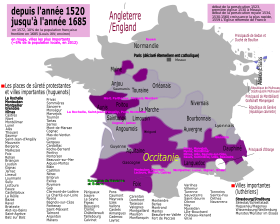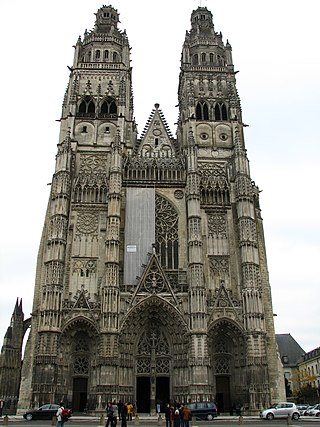
The Roman Catholic Archdiocese of Tours is an archdiocese of the Latin Rite of the Roman Catholic Church in France. The archdiocese has roots that go back to the 3rd century, while the formal erection of the diocese dates from the 5th century.

The Archdiocese of Reims is a Latin Church ecclesiastic territory or archdiocese of the Catholic Church in France. Erected as a diocese around 250 by St. Sixtus of Reims, the diocese was elevated to an archdiocese around 750. The archbishop received the title "primate of Gallia Belgica" in 1089.
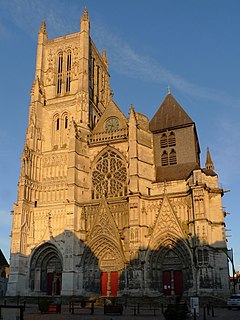
The Roman Catholic Diocese of Meaux is a diocese of the Latin Rite of the Roman Catholic Church in France. The diocese comprises the entire department of Seine-et-Marne. It was suffragan of the Archdiocese of Sens until 1622, and subsequently of Archdiocese of Paris.

The Diocese of Digne is a Latin Church ecclesiastical territory or diocese of the Catholic Church in France. Erected in the 4th century as the Diocese of Digne, the diocese has been known as the Diocese of Digne–Riez–Sisteron since 1922. The diocese comprises the entire department of Alpes-de-Haute-Provence, in the Region of Provence-Alpes-Côte d'Azur. The diocese was a suffragan diocese of the Archdiocese of Aix-en-Provence and Arles until 2002 and is now a suffragan diocese in the ecclesiastical province of the metropolitan Archdiocese of Marseille. The Bishop of Digne's cathedra is found in Digne Cathedral at the episcopal see of Digne-les-Bains.

The Roman Catholic Diocese of Nice is a diocese of the Latin Church of the Roman Catholic Church in France. The diocese comprises the Départment of Alpes-Maritimes. The diocese is a suffragan of the Archdiocese of Marseille.
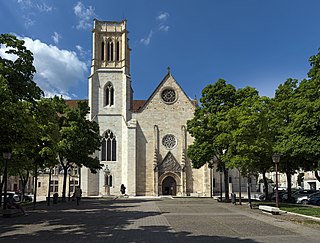
The Diocese of Agen is a Latin Church ecclesiastical territory or diocese of the Catholic Church in France.

The Roman Catholic Diocese of Saint-Flour is a diocese of the Latin Rite of the Roman Catholic Church in France. The diocese comprises the department of Cantal. Erected in 1317, the diocese was suffragan of the Archdiocese of Bourges until 2002. With the general reorganization of the structure of the French church by Pope John Paul II, Saint-Flour became the suffragan of the Archdiocese of Clermont. The seat of the bishop is located in Saint-Flour, Cantal.
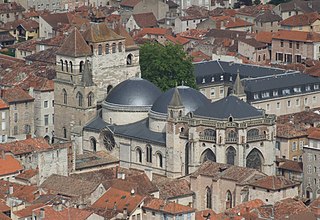
The Roman Catholic Diocese of Cahors is a diocese of the Latin Rite of the Roman Catholic Church in France. The diocese comprises the whole of the department of Lot.

The Diocese of Châlons is a Latin Church ecclesiastical territory or diocese of the Catholic Church in Châlons-sur-Marne, France. The diocese comprises the department of Marne, excluding the arrondissement of Reims.

The Roman Catholic Diocese of Viviers is a diocese of the Latin Rite of the Roman Catholic Church in France. Erected in the 4th century, the diocese was restored in the Concordat of 1822, and comprises the department of Ardèche, in the Region of Rhône-Alpes. Currently the diocese is a suffragan of the Archdiocese of Lyon. Its current bishop is Jean-Louis Marie Balsa, appointed in 2015.

The Roman Catholic Diocese of Luçon is a diocese of the Latin Rite of the Roman Catholic Church in France. Its see is Luçon Cathedral in the commune of Luçon. The diocese comprises the department of Vendée. Created in 1317 out of the diocese of Poitiers, its existence was interrupted during the French Revolution, but it was restored in 1821, along with the Bourbon restoration.
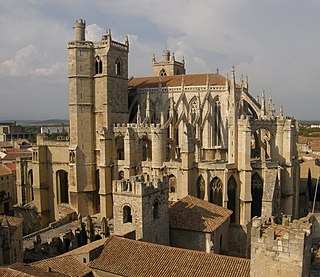
The former Catholic diocese of Narbonne existed from early Christian times until the French Revolution. It was an archdiocese, with its see at Narbonne, from the year 445, and its influence ran over much of south-western France and into Catalonia.
The former French Catholic diocese of Alet was created in 1317 from territory formerly in the diocese of Narbonne. The diocese continued until the French Revolution when it was suppressed by the Concordat of 1801.
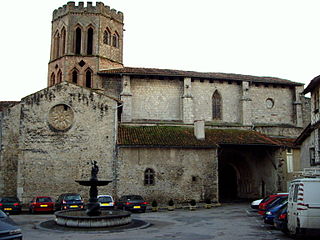
The former French Catholic diocese of Couserans existed perhaps from the fifth century to the French Revolution in the late eighteenth century. It covered the former province of Couserans, in south-west France. Its episcopal seat was in Saint-Lizier, a small town to the west of Foix. It was a suffragan of the archdiocese of Auch.

The former French Roman Catholic Diocese of Saint-Papoul, now a Latin titular see, was created by Pope John XXII in 1317 and existed until the Napoleonic Concordat of 1811.

The former French Catholic diocese of Saint-Pons-de-Thomières existed from 1317 until the French Revolution. Its see at Saint-Pons-de-Thomières in southern France is in the modern department of Hérault. There was the Abbey of St-Pons, founded in 936 by Raymond, Count of Toulouse, who brought there the monks of St-Géraud d'Aurillac.

The Diocese of Bazas, centred on Bazas in Aquitaine, covered the Bazadais region, known under the Romans as the Vasatensis pagus after the ancient occupants, the Vasates. In the 2nd century it was part of the Novempopulania, one of the seventeen provinces of Gaul. The diocese must have been created between the first and the third centuries, but because of the large numbers of invaders that passed through this region - Arians, Saracens, Normans - the list of bishops is much reduced during the first millennium. The first bishop of this diocese is mentioned, without a name, by Gregory of Tours in his De gloria martyrum.

The Roman Catholic Archdiocese of Albi (–Castres–Lavaur), usually referred to simply as the Archdiocese of Albi, is a non-metropolitan archdiocese of the Latin Rite of the Catholic Church in southern France. The archdiocese comprises the whole of the department of Tarn, and has itself been suffragan, since the 2002 provinces reform, to the Archdiocese of Toulouse, a metropolitan archdiocese.
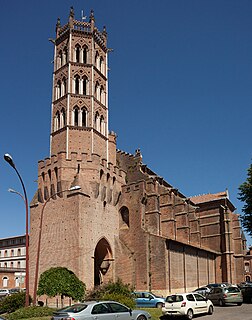
The Roman Catholic Diocese of Pamiers, Couserans, and Mirepoix is a diocese of the Latin Rite of the Roman Catholic Church in southern France. The diocese comprises the department of Ariège and is suffragan to the Archdiocese of Toulouse. The diocese of Pamiers is divided into five Deaneries: Pamiers, Foix, Haut-Ariège, Couserans, and Pays-d'Olmes-Mirapoix. The episcopal see is the Cathedral of Saint Antoninus in the city of Pamiers.

The Roman Catholic Diocese of Montauban is a diocese of the Latin Rite of the Roman Catholic Church in France. The diocese is coextensive with Tarn-et-Garonne, and is currently a suffragan of the Archdiocese of Toulouse. The episcopal seat of the Diocese of Montauban is in Montauban Cathedral.

